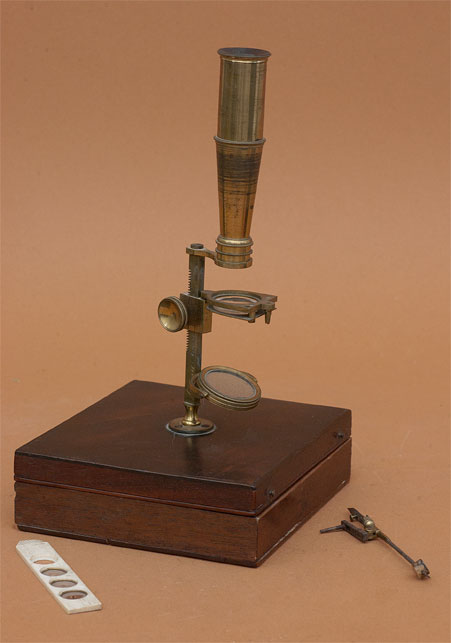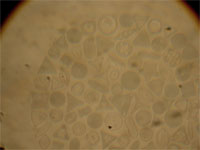 |
|||||
 |
 |
||||
 |
|||||
 |
 |
||||

William Cary (1759-1825) was a prominent maker of "Mathematical Instruments" (including microscopes) located on the Strand, in London. Cary was an apprentice of Jesse Ramsden until 1785, after which he established his own firm. Charles Gould was an employee of Cary, possibly an apprentice, and stayed with the firm throughout his career. It was during his early days in the Cary firm that Gould invented this famous microscope. After Cary's death in 1825 the firm, owned by Cary's sons John Jr and George, was managed by Charles Gould. (For more information regarding the Cary-Gould optical business and the complex Gould/Porter/Cary lineage see this link.)
An instrument of this type was called a "pocket microscope" because of its size and portability. Microscopes of this general design continued to be made well into the 19th Century due to their popularity among the many people with interests in natural history. This type of instrument often varied in design, some larger, some with the pillar mounted on the front edge of the box like the original Gould invention, some mounted on the top of the box, some signed, and some unsigned. This instrument shows an interesting design. The microscope support arm is screwed into the top of the pillar, which is a later design feature. However, the stage is round with one flat side, which is the initial design of the Cary/Gould microscope, as is the stage-mounted condenser lens and the double objectives. Finally, the case is quite large for a "Cary" microscope (12.5x11.8x3.5cm), which is also an earlier design feature. Thus this instrument has been dated c1830 for possessing some of these original Cary/Gould features. This microscope in the Golub Collection is the classic design of Charles Gould (c1786–1849) as advertised in his 1827 booklet entitled The Companion to the Microscope and a Description of C. Gould's Improved Pocket Compound Microscope... An engraving of a microscope similar to this one is included in the frontispiece (See this link for more information about Gould microscopes.)
Microscope featured 04/2015

